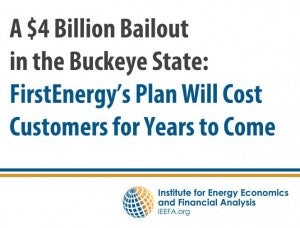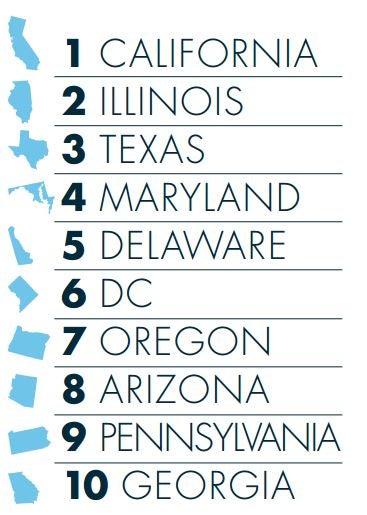 California’s “big three” utilities, at the behest of state regulators, are in the process of examining and improving how they price electricity, including something called time-of-use (TOU) electricity pricing. This option – which rewards people who shift some of their electricity use to times of day when clean energy is abundant and electricity is cheaper – can help California families create safer communities while saving money on their utility bills. Mom’s Clean Air Force California mom Linda Hutchins-Knowles agrees, and recently wrote this opinion piece in the San Jose Mercury News encouraging others to adopt TOU.
California’s “big three” utilities, at the behest of state regulators, are in the process of examining and improving how they price electricity, including something called time-of-use (TOU) electricity pricing. This option – which rewards people who shift some of their electricity use to times of day when clean energy is abundant and electricity is cheaper – can help California families create safer communities while saving money on their utility bills. Mom’s Clean Air Force California mom Linda Hutchins-Knowles agrees, and recently wrote this opinion piece in the San Jose Mercury News encouraging others to adopt TOU.
Linda, like many moms, wears multiple hats. As a mother, she wants to help leave her children a safer, more sustainable word. As an advocate, she supports increasing our use of clean energy over dirty fossil fuels to help clean our air and environment as a whole. Finally, as a consumer, she wants to do these things without breaking the bank. Read More










 FirstEnergy’s plea to keep four aging power plants alive will cost Ohio customers almost $4 billion, according to a new study out today by the Institute for Energy Economics and Financial Analysis (IEEFA). The proposal is currently in front of the Public Utilities Commission of Ohio (PUCO).
FirstEnergy’s plea to keep four aging power plants alive will cost Ohio customers almost $4 billion, according to a new study out today by the Institute for Energy Economics and Financial Analysis (IEEFA). The proposal is currently in front of the Public Utilities Commission of Ohio (PUCO). Ohio utilities FirstEnergy and AEP, as readers of this blog know too well, want the Buckeye State to bail out their uneconomic power plants. Combined, their proposals before the Public Utilities Commission of Ohio (PUCO) would run Ohioans nearly $6 billion in increased costs. We understand where the companies’ greedy desire for subsidies comes from, but the arguments for them have become downright silly.
Ohio utilities FirstEnergy and AEP, as readers of this blog know too well, want the Buckeye State to bail out their uneconomic power plants. Combined, their proposals before the Public Utilities Commission of Ohio (PUCO) would run Ohioans nearly $6 billion in increased costs. We understand where the companies’ greedy desire for subsidies comes from, but the arguments for them have become downright silly. Questions about if and how hydraulic fracturing activities (or “fracking” to some) can contaminate drinking water have been top-of-mind for many since the practice started getting widespread public attention about a decade ago. Recognizing the validity of those concerns, EPA undertook a study to see how the full ‘hydraulic fracturing water cycle’ – which includes water withdrawals, chemical use and mixing, well injection, waste water management and disposal — could potentially impact our drinking water resources. In a
Questions about if and how hydraulic fracturing activities (or “fracking” to some) can contaminate drinking water have been top-of-mind for many since the practice started getting widespread public attention about a decade ago. Recognizing the validity of those concerns, EPA undertook a study to see how the full ‘hydraulic fracturing water cycle’ – which includes water withdrawals, chemical use and mixing, well injection, waste water management and disposal — could potentially impact our drinking water resources. In a  The GridWise Alliance, a leading business forum for the development of a smart, clean, modern electric grid, just released its
The GridWise Alliance, a leading business forum for the development of a smart, clean, modern electric grid, just released its  Last week, GridWise Alliance released its
Last week, GridWise Alliance released its